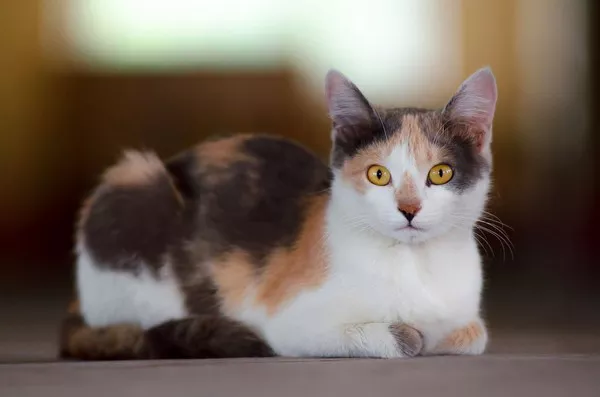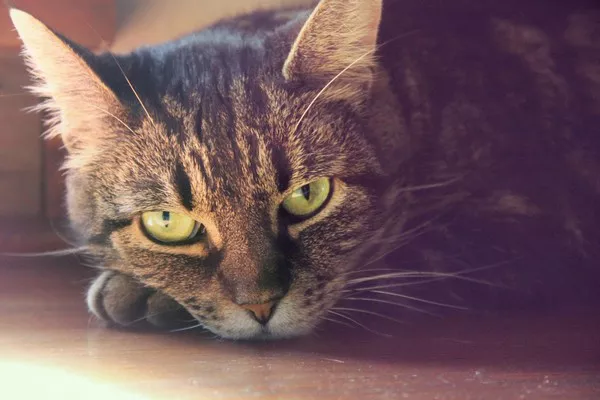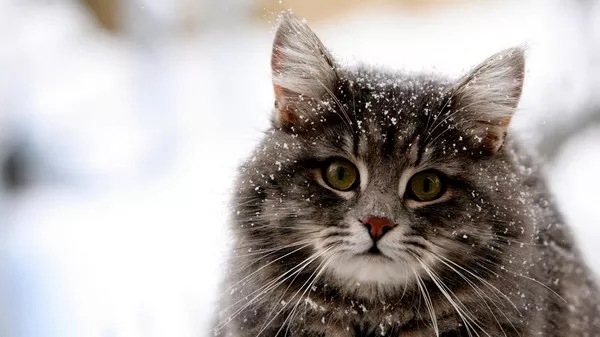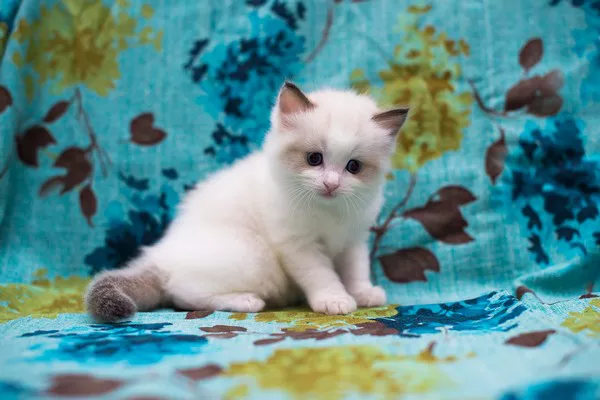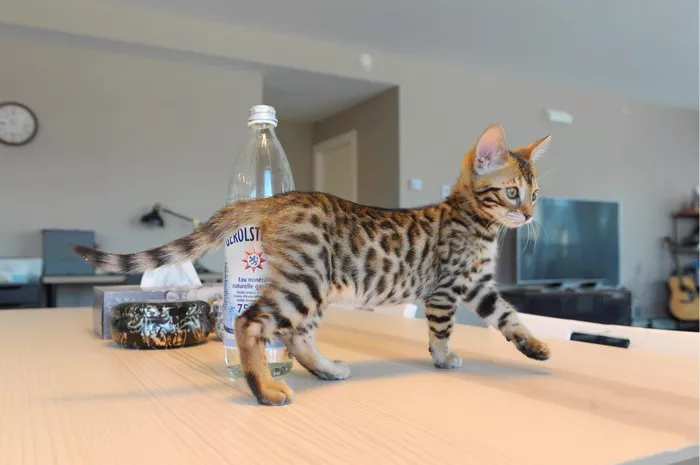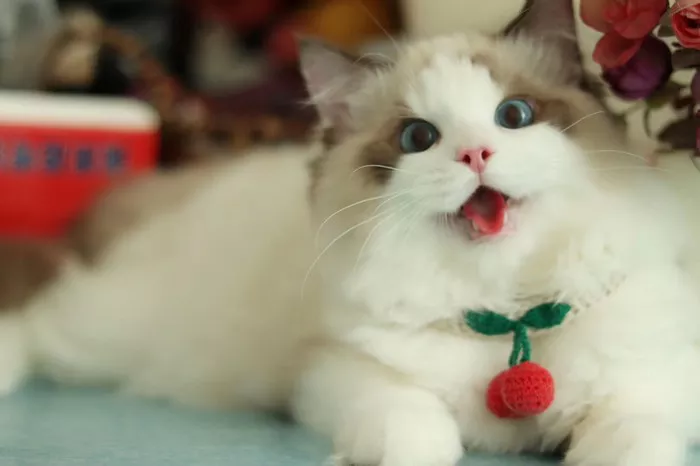Calico cats are known for their distinctive coat patterns, characterized by patches of white, black, and orange or red fur. While their unique coloring often steals the spotlight, some calico cats may also exhibit crossed eyes, a phenomenon that has puzzled cat lovers and researchers alike. In this comprehensive guide, we delve into the mystery of calico cat eyes, exploring the possible causes of crossed eyes in calico cats and dispelling common misconceptions surrounding this fascinating trait.
Calico Cats
Breed Overview
Calico cats, also known as tricolor or tortoiseshell-and-white cats, are not a specific breed but rather a coat pattern found in many breeds, including domestic shorthair and domestic longhair cats. Calico cats are characterized by their distinctive patchwork coats, which feature a combination of white, black, and orange or red fur. The unique genetics responsible for their coat coloration make calico cats stand out among their feline counterparts.
Color Genetics
The coloration of calico cats is determined by a combination of genetic factors, including sex-linked genes and random X-chromosome inactivation. Female calico cats typically have two X chromosomes (XX), one carrying the gene for black or orange coloration and the other carrying the gene for white coloration. During embryonic development, one of the X chromosomes in each cell is randomly inactivated, resulting in the patchwork pattern characteristic of calico cats.
The Mystery of Crossed Eyes in Calico Cats
Crossed Eyes: An Uncommon Trait
While crossed eyes, or strabismus, can occur in cats of any breed or coat color, it is relatively uncommon compared to other eye conditions. However, some calico cats may exhibit crossed eyes, with one or both eyes appearing to deviate inward or outward from their normal alignment. The presence of crossed eyes in calico cats has sparked curiosity among cat enthusiasts and led to speculation about its underlying causes.
Possible Explanations
Several factors may contribute to the occurrence of crossed eyes in calico cats, including genetic predisposition, developmental abnormalities, and neurological conditions. While the exact mechanism remains uncertain, researchers have proposed various hypotheses to explain this phenomenon.
Genetic Factors
Inherited Traits
Genetic predisposition may play a role in the development of crossed eyes in calico cats. Certain genetic mutations or variations may affect the development of the ocular muscles or nerves, leading to abnormalities in eye alignment. In some cases, these genetic factors may be inherited from one or both parent cats, increasing the likelihood of crossed eyes in offspring.
Polygenic Inheritance
Crossed eyes in calico cats may also result from polygenic inheritance, involving the interaction of multiple genes that influence eye development and function. The complex interplay of genetic factors may predispose calico cats to ocular abnormalities, including strabismus, although the specific genes involved have yet to be identified.
Developmental Abnormalities
Early Developmental Factors
Developmental abnormalities during embryonic or early postnatal stages may contribute to the occurrence of crossed eyes in calico cats. Disruptions in the normal growth and differentiation of ocular tissues, such as the muscles, nerves, or optic pathways, can lead to misalignment of the eyes and impaired binocular vision.
Intrauterine Environment
Factors affecting the intrauterine environment, such as maternal health, nutrition, and exposure to toxins or medications, may influence fetal development and increase the risk of congenital abnormalities, including ocular defects. Environmental stressors or insults during critical periods of gestation could potentially disrupt normal eye development and contribute to crossed eyes in calico cats.
Neurological Conditions
Central Nervous System Disorders
Neurological conditions affecting the central nervous system may also manifest as crossed eyes in calico cats. Disorders affecting the brainstem, cerebellum, or visual pathways can disrupt the coordination of eye movements and lead to strabismus. While less common than developmental abnormalities, neurological conditions should be considered as potential causes of crossed eyes in calico cats.
Injury or Trauma
In some cases, crossed eyes in calico cats may result from injury or trauma to the eyes or surrounding structures. Blunt force trauma, penetrating injuries, or accidents involving the head or face can damage ocular tissues or nerves, leading to altered eye alignment. Prompt veterinary evaluation and treatment are essential for diagnosing and managing eye injuries in cats.
Dispelling Common Misconceptions
Myth: Calico Cat Eyes Are Always Crossed
One common misconception surrounding calico cats is that all calicos have crossed eyes. While crossed eyes may occur in some calico cats, it is not a universal trait among all calico cats. Many calico cats have normal eye alignment and exhibit no signs of strabismus.
Myth: Crossed Eyes in Calico Cats Are Harmful
Contrary to popular belief, crossed eyes in calico cats are not necessarily harmful or indicative of underlying health problems. While crossed eyes may affect visual perception and depth perception to some extent, many cats with strabismus adapt well to their condition and lead normal, healthy lives. However, it is still important to monitor for any signs of discomfort, vision impairment, or associated health issues and seek veterinary care if needed.
Myth: Crossed Eyes Can Be Corrected Through Surgery
While surgical correction may be an option for some cases of strabismus in cats, it is not always necessary or feasible. The decision to pursue surgical intervention depends on various factors, including the underlying cause of the crossed eyes, the severity of the condition, and the cat’s overall health and well-being. Surgical correction should only be considered after a thorough evaluation by a veterinary ophthalmologist and careful consideration of the potential risks and benefits.
Conclusion
The occurrence of crossed eyes in calico cats remains a fascinating and enigmatic phenomenon, with various factors potentially contributing to its development. While genetic predisposition, developmental abnormalities, and neurological conditions may play a role, the exact cause of crossed eyes in calico cats is not always clear-cut. As with any health condition, it is essential to approach crossed eyes in calico cats with careful observation, veterinary evaluation, and informed decision-making. By dispelling common misconceptions and exploring the underlying factors, we can gain a deeper understanding of this intriguing aspect of calico cat genetics and celebrate the diversity and complexity of the feline world.

